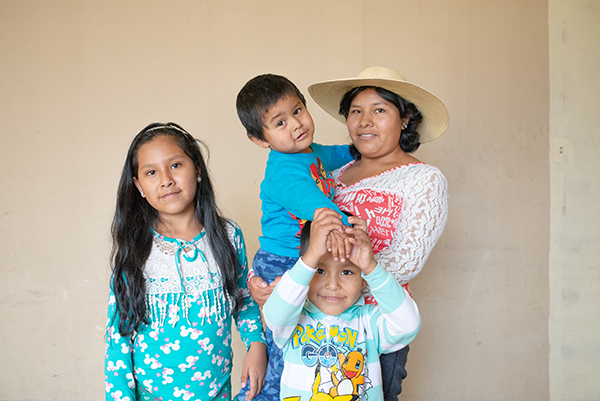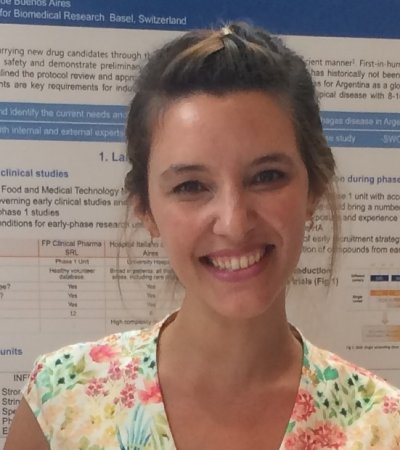Pharmacokinetic analysis of Nifurtimox and Benznidazole treatment in Chagas disease
Pharmacokinetic analysis of Nifurtimox and Benznidazole treatment in Chagas disease
This Study Group aims to develop a deeper understanding of the pharmacokinetics of drugs used to treat Chagas disease (CD). Currently Nifurtimox and Benznidazole

There are currently only 2 drugs approved to treat CD which date from the ‘70s: Nifurtimox (NFX) and Benznidazol (BZN). Both drugs seem to have similar efficacy and safety profiles. Reported treatment responses in the chronic indeterminate phase in children (mostly based on measuring serologic titers) are near 90% after NFX treatment[1] and 94% for BNZ[2, 3]. In adults, NFX has treatment response rate of 7-8%[4, 5] and BZN between 2 and 40%. However, many aspects of the pharmacology of both drugs remain unknown, such as pharmacokinetics, metabolism and effectiveness.
BZN is currently the most commonly used treatment for CD. The recommended treatment course is 5–7 mg/kg in adults and 5-10 mg/kg in children, given orally in two or three daily doses for 60 days. The recommended dose regimen for NFX is 8-20 mg/kg orally, divided in three daily doses for 60 days. Both of these drugs cause toxicity in over half the treated patients and the dose regimen cannot be completed by approximately 1 in 6 adult patients. This shows that new drugs are needed to treat the disease.
A systematic review and pooled pharmacokinetic analysis of BZN and NFX will be conducted as part of the the CHARM project (CHAgas phARMacometric platform). CHARM aims to develop a methodology platform for phase 2 assessments of new drugs in development to treat Chagas disease [6, 7]. An important step in building this platform is to have a clearer understanding of the pharmacological and therapeutic characteristics of the drugs currently used.
To build population pharmacokinetic models to characterize the pharmacometric properties of Benznidazol and Nifurtimox, using all currently available individual participant data.
- PICOT: Subjects that have received either Nifurtimox or Benznidazol and have had drug levels measured
- Study design: original studies (with primary data collection)
- Setting
- Time frame: No time limit
- Report characteristics (such as years considered, language, publication status) to be used as criteria for eligibility for the review
Exclusion criteria
- Animal studies
- Non-primary clinical research (Review articles, Opinion pieces, clinical guidelines, text-book chapters, letters, meta-analysis, KAP surveys, qualitative surveys, simulation study, analytical methods, protocol)
- Conference proceedings that have been subsequently published
- If data (dose or concentration measurements) is missing
- Full text, not available
- Not in Spanish, Portuguese or English
For a full list of all variables desired please contact the study group coordinator
- About BNZ and NFX:
- Matrix of measurement
- Method of drug measurement
- Date, time (in hh:mm:ss) and dose amount (in mg or µg)
- Date, time (in hh:mm:ss) and amount measured (in mg/ml or µg/ml)
- Interdose interval
- Treatment duration
- About the patient:
- Study ID
- Gender (M/F)
- Age (in months or years)
- AST/ALT
- Total body weight (in kg)
- Height (in cm)
- Serum creatinine
- Creatinine clearance (CLCR) (and formula used to evaluate it)
- Hematocrit
- Total bilirubin
- About the disease:
- PCR results: with date
- Antibodies results: technique and date
Once all the data sets will be uploaded in the IDDO Data Repository, they will be standardised and pooled into a single database of quality-assured individual patient data using Chagas CDISC standards.
Pharmacokinetic analysis
Nonlinear mixed-effects modeling will be performed using NONMEM v.7.5 or newer (Icon Development Solutions)[8], following a three-step strategy: (i) basic population model development, (ii) covariate selection, and (iii) model validation. Support software will include R v3.1.1 or newer (R Foundation for Statistical Computing, Vienna, Austria) and the package Xpose v4.5.0 or newer[9] to guide the model building process. Pearl speaks-NONMEM (PsN) v.3.7.3 or newer will be used for automation throughout the modeling process[10].
Different disposition models (e.g. 1-compartment or 2-compartment disposition models) as well as different absorption models (e.g. first order absorption with or without lagtime and transit compartment models). Residual variability will be included in the model, and inter-individual (IIV) as well as inter-occasion (IOV)[11] variability will be evaluated on relevant parameters:
Pi = θP X exp (ηP, κP)
Where Pi is the individual value of parameter P, θP is the population mean value of P and ηP, κP are random effects capturing the IIV and IOV of P, respectively. Goodness-of-fit for a given model will be assessed by (i) changes in the NONMEM-derived objective function value (OFV), (ii) plots of population and individual predicted concentrations versus observed concentrations as well as plots of conditional weighted residuals (CWRES) versus predicted concentrations and time [12, 13], (iii) parameter precision, and (iv) simulation-based diagnostics.
The difference in -2×log likelihood of the data when comparing two hierarchical models (log likelihood ratio test) is asymptotically chi-square distributed, with degrees of freedom equal to the difference in the number of model parameters. On a significance levels of 5% and 1% a drop in the OFV of 3.841 and 6.64 between two hierarchical models are deemed statistically significant respectively, for a one-parameter difference. [9, 10]For the covariate evaluation, all reasonable demographic and biological factors will be tested for inclusion in the basic population PK model. These will be tested in NONMEM by using a step-wise approach. In the stepwise procedure, a significance level of 5% will be used in the forward search and significance level of 1% in the backward search[14]
Model evaluation
The internal validation of the PK model will be assessed by graphical and statistical methods, including visual predictive checks (vpc)[15]. The bootstrap resampling technique (with replacement) will be used to derive non-parametric confidence intervals (CIs) of pharmacokinetic parameters and to assess the stability and the robustness of the final model[16]. [10] Parameter shrinkage from NONMEM will also be considered [14].
The Study Group comprises participating investigators who contribute relevant data to the pooled analysis. Data will remain the property of the investigator. The Study Group collectively makes decisions with respect to including additional studies, data analysis and plans for publication, in line with the IDDO Publication Policy of April 2019. The Study Group will identify one or two people to coordinate activities including data analysis, and drafting of publications and reports for group review. The study group statistician(s) will be responsible for statistical analyses.
The Study Group coordinator is Cintia V. Cruz who can be contacted via email at cintia@tropmedres.ac
For further information, please email: chagas@iddo.org
1. Streiger, M.L., et al., Estudo longitudinal e quimioterapia específica em crianças, com doença de Chagas crônica, residentes em área de baixa endemicidade da República Argentina. Revista da Sociedade Brasileira de Medicina Tropical, 2004. 37(5): p. 365-375.
2. Altcheh, J., et al., Adverse events after the use of benznidazole in infants and children with Chagas disease. Pediatrics, 2011. 127(1): p. e212-8.
3. de Andrade, A.L., et al., Randomised trial of efficacy of benznidazole in treatment of early Trypanosoma cruzi infection. Lancet, 1996. 348(9039): p. 1407-13.
4. Rodriques Coura, J. and S.L. de Castro, A critical review on Chagas disease chemotherapy. Mem Inst Oswaldo Cruz, 2002. 97(1): p. 3-24.
5. Lauria-Pires, L., et al., Progressive chronic Chagas heart disease ten years after treatment with anti-Trypanosoma cruzi nitroderivatives. Am J Trop Med Hyg, 2000. 63(3-4): p. 111-8.
6. Dndi, DNDi, GlaxoSmithKline, and University of Dundee to identify drug candidates to treat leishmaniasis and Chagas disease | DNDi. 2018.
7. novartis. Chagas disease. 2022; Available from: https://www.novartis.com/diseases/chagas-disease.
8. Beal, S., et al. NONMEM Use’ s Guides. (198Y 2009). 2009.
9. Jonsson, E.N. and M.O. Karlsson, Xpose--an S-PLUS based population pharmacokinetic/pharmacodynamic model building aid for NONMEM. Comput Methods Programs Biomed, 1999. 58(1): p. 51-64.
10. Lindbom, L., J. Ribbing, and E.N. Jonsson, Perl-speaks-NONMEM (PsN)—a Perl module for NONMEM related programming. Computer Methods and Programs in Biomedicine, 2004. 75(2): p. 85-94.
11. Karlsson, M.O. and L.B. Sheiner, The importance of modeling interoccasion variability in population pharmacokinetic analyses. Journal of Pharmacokinetics and Biopharmaceutics, 1993. 21(6): p. 735-750.
12. Ette, E.I. and T.M. Ludden, Pharmaceutical Research, 1995. 12(12): p. 1845-1855.
13. Hooker, A.C., C.E. Staatz, and M.O. Karlsson, Conditional Weighted Residuals (CWRES): A Model Diagnostic for the FOCE Method. Pharmaceutical Research, 2007. 24(12): p. 2187-2197.
14. Savic, R.M. and M.O. Karlsson, Importance of Shrinkage in Empirical Bayes Estimates for Diagnostics: Problems and Solutions. The AAPS Journal, 2009. 11(3): p. 558-569.
15. Bergstrand, M., et al., Prediction-Corrected Visual Predictive Checks for Diagnosing Nonlinear Mixed-Effects Models. The AAPS Journal, 2011. 13(2): p. 143-151.
16. Efron, B., Bootstrap Methods: Another Look at the Jackknife. The Annals of Statistics, 1979. 7(1): p. 1-26, 26.
Wellcome Trust


